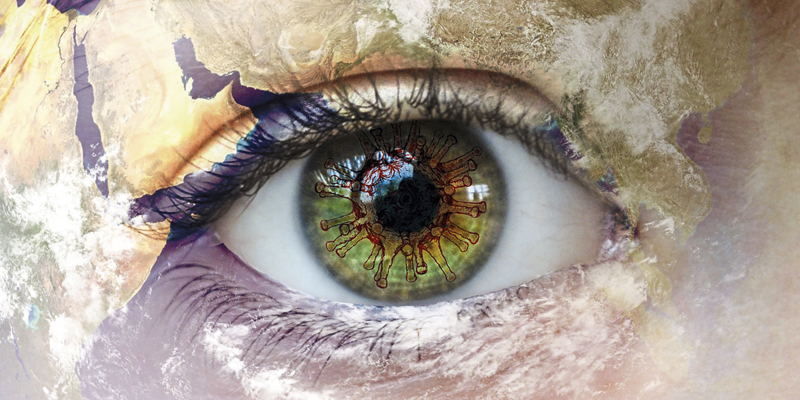The Covid-19 pandemic shows the importance of knowing people’s locations, says Alistair Maclenan

As I write this issue’s column, the graph describing the number of people infected with Covid-19 across the globe looks like a stunt motorcyclist’s ramp built for an attempt to clear the Grand Canyon!
Wherever you are reading this article, the common reaction of national governments to this pandemic has been to isolate their citizens within their homes, curtail travel and ban mass gatherings. I am willing to wager that not a single reader thought the sentiment of that last sentence – that the location of individuals is considered critical to controlling the spread of a disease – to be unusual or counter-intuitive.
In 2020, we understand that the proximity to someone with a disease, whether that has been caused by a bacterium or a virus, is one of the most important factors behind an infection taking hold within the wider population.
It wasn’t always so. During the 1918 “Spanish Flu” outbreak, which is thought to have claimed the lives of between 50-100 million souls, people variously believed that those deaths were caused by the misalignment of the planets, oats that had been deliberately poisoned or erupting volcanoes.
Before you mock ridiculous ideas of the past, remember that today astrology is still popular, the number of unvaccinated children continues to rise and people continue to believe in the existence of a ‘soul’.
Epidemiology is the study and analysis of the distribution, patterns and determinants of disease, and is now one of the cornerstones upon which country-wide health decisions are made.
One of the first reactions to the spread of COIVD-19 was the creation of online maps – have a look at the remarkable GIS-driven dashboard created by Johns Hopkins University at https://coronavirus.jhu.edu/ma... – because that is considered the best way to educate and inform the majority about the progression and danger of a virus.
The roots of this science are found in mid-19th century London, when anaesthetist John Snow mapped the locations of all the people infected with cholera during one of the outbreaks that were common at that time. His idea was that the water supply was causing the infection but what he needed was analytic proof to support that hypothesis.
Creating a map of patients and the location of the public water pumps showed a cluster of cases around a single pump. It also showed a lack of cases around a deep well in the local brewery, proving that contaminated water from the pump was to blame.
Snow and local priest Henry Whitehead went into the community to confirm where they got their water from and married that information with whether they were sick. They also told people to stop using the contaminated pump. When the local council eventually removed the pump handle, new infections stopped altogether.
That process – test the hypothesis, educate the population, take action – has by and large remained unchanged since then. By controlling the location of people in relation to each other and their surroundings, the science of epidemiology has protected us from a host of diseases.
Coincidentally, I wrote in the previous issue about people’s reticence to share their locations for the common good. Should those fears now be universally overridden to ensure that quarantine is being observed or is that a move to a society that resembles the one within which this virus has its origin?
Would a real-time map of everyone’s locations lower the ramp of infections more quickly and save lives or are people willing to sacrifice a few for the liberty of the many? Only time will tell. In the meantime, stay apart and well.
Alistair Maclenan is founder of the geospatial B2B marketing agency Quarry One Eleven (www.quarry-one-eleven.com)


